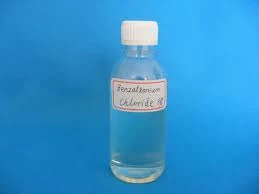flocculation chemicals
Understanding Flocculation and Its Chemical Agents
Flocculation is a vital process utilized in various industries, particularly in water treatment, food production, and wastewater management. At its core, flocculation involves the aggregation of fine particles into a floc, which can then be removed from liquids. This process is largely facilitated by the use of flocculation chemicals, which play a critical role in enhancing the efficiency of separation processes.
Flocculation chemicals are typically divided into two main categories inorganic and organic flocculants. Inorganic flocculants, such as aluminum sulfate and ferric chloride, are often favored for their cost-effectiveness and broad applicability. These chemicals work by neutralizing the charges on particles suspended in water, allowing them to clump together and form larger aggregates. For instance, aluminum sulfate is widely used in municipal water treatment facilities to aid in the removal of turbidity and contaminants.
On the other hand, organic flocculants are polymeric substances that can be tailored for specific applications. These include anionic, cationic, and non-ionic polymers, each designed to interact differently with suspended particles. Cationic flocculants tend to be more effective in situations where the suspended materials carry a negative charge, such as in wastewater treatment. Their high molecular weight allows them to form strong bonds with other particles, promoting faster settling and clearer effluent.
flocculation chemicals

The effectiveness of flocculation agents can be influenced by several factors, including pH, temperature, and the characteristics of the suspended particles. For example, in a wastewater treatment setting, the presence of oils and greases may hinder the flocculation process. Adjusting the pH to optimize the performance of the flocculants can often help enhance the efficiency of the treatment process.
Another crucial aspect of using flocculation chemicals is their environmental impact. While many inorganic flocculants are generally safe, the long-term effects of organic polymers on ecosystems are still being studied. As such, environmentally friendly alternatives, including biodegradable flocculants, are gaining traction. These alternatives aim to minimize the ecological footprint of chemical processes while maintaining effective performance.
The growing concern over water quality has spurred advancements in flocculation technologies. Innovations such as enhanced coagulation and the use of microflocculation are being explored to improve the efficiency of these processes further. Additionally, the integration of automated monitoring systems allows for real-time adjustments to the dosing of flocculation chemicals, optimizing performance based on the immediate characteristics of the water being treated.
In conclusion, flocculation is a crucial component of various industrial processes, providing a means to efficiently separate and remove suspended particles from liquids. Understanding the types of flocculation chemicals available and their mechanisms of action is essential for optimizing these processes. As industries continue to evolve and place greater emphasis on environmental sustainability, the development of more efficient and eco-friendly flocculation solutions will be paramount. By leveraging advancements in chemical engineering and technology, we can pave the way for cleaner water and sustainable practices in industries worldwide.
-
Water Treatment with Flocculant Water TreatmentNewsJun.12,2025
-
Polymaleic AnhydrideNewsJun.12,2025
-
Polyaspartic AcidNewsJun.12,2025
-
Enhance Industrial Processes with IsothiazolinonesNewsJun.12,2025
-
Enhance Industrial Processes with PBTCA SolutionsNewsJun.12,2025
-
Dodecyldimethylbenzylammonium Chloride SolutionsNewsJun.12,2025





